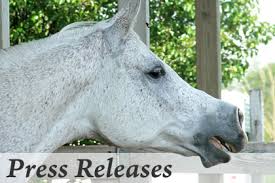Tree-Hugging Horse Owners
- Posted by TheHorse.com
By Kate Norris
I flung myself into the world of horses, first by riding and grooming a rubber Hippity Hop Mickey Mouse bouncy toy. With Mickey quietly hitched to the dresser pull in my bedroom, I lovingly groomed him between rides with a nail brush I stole from my mom’s manicure kit. A few years later, I finally was the proud owner of a $500 pony.
By contrast, I stumbled backward into to the field of natural resource conservation 12 years ago. After walking around my parent’s five-acre horse property with a conservation specialist, I told her I thought she had a pretty cool job, talking with horse people all day about mud, manure, and pasture management. She then told me about a conservation specialist employment opportunity in a neighboring county and encouraged me to apply. After a successful interview with the Prince William Soil and Water Conservation District, I was hired–my employers promised to teach me all about conservation if I could unravel for them the mysteries of horse people.
Over the next few years I learned about natural resource conservation without stepping into a classroom. My co-workers and area farmers became my teachers. In my journey to learn more about how horse farms could impact ponds, streams, and the nearby Chesapeake Bay, I drew upon my knowledge of horses and stable management from a typical horse person background. Those years between receiving my first pony and my new role as a conservationist had been filled with Pony Club, a bachelor’s degree in horsemanship, and various positions as a vet tech, groom, instructor, trainer, and barn manager–a foundation that still keeps me looking at conservation from a horse owner’s perspective
Create a free account with TheHorse.com to view this content.
TheHorse.com is home to thousands of free articles about horse health care. In order to access some of our exclusive free content, you must be signed into TheHorse.com.
Start your free account today!
Already have an account?
and continue reading.
Written by:
TheHorse.com
Related Articles
Stay on top of the most recent Horse Health news with












6 Responses
re: Tree-Hugging Horse Owners
Hi Arlene, Karen: We have some articles on composting on TheHorse.com, including these:
http://www.thehorse.com/ViewArticle.aspx
re: Tree-Hugging Horse Owners
It’s all about water, yes, but not "rain" out here in the west where the problem is scant rainfall as a rule (other than spring runoff). Overgrazing of pastures and the resulting proliferation of noxious weeds is the bigger problem here.
re: Tree-Hugging Horse Owners
Please let you readers know that many professional hay growers now apply weed killer to their fields. After watching my garden wilt 3 years in a row, my hay grower admitted that the manure from my horses can only be used on the yard-not on flower
re: Tree-Hugging Horse Owners
what a fascinating new field (to me!). I am environmentally-conscious, and also a horse owner. I hope you share more tips- I know plenty of horse owners who don’t care much at all about environmentalism, but they do care about efficiency, f
re: Tree-Hugging Horse Owners
I also would like to read/see more about your management routine… and your MANURE COMPOSTER ?? Sounds like a great help with waste management on small acreage …. and I am up to my ears in RAIN MUD AND live on an incline to our local estuary…all d
re: Tree-Hugging Horse Owners
Where can I find the MANURE COMPOSTER ?? Sounds like a great help with waste management on small acreage ….